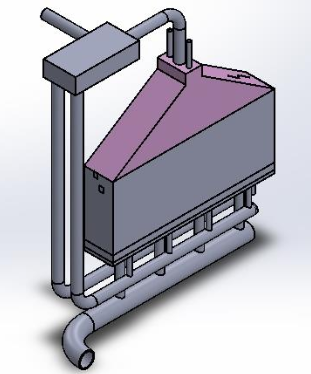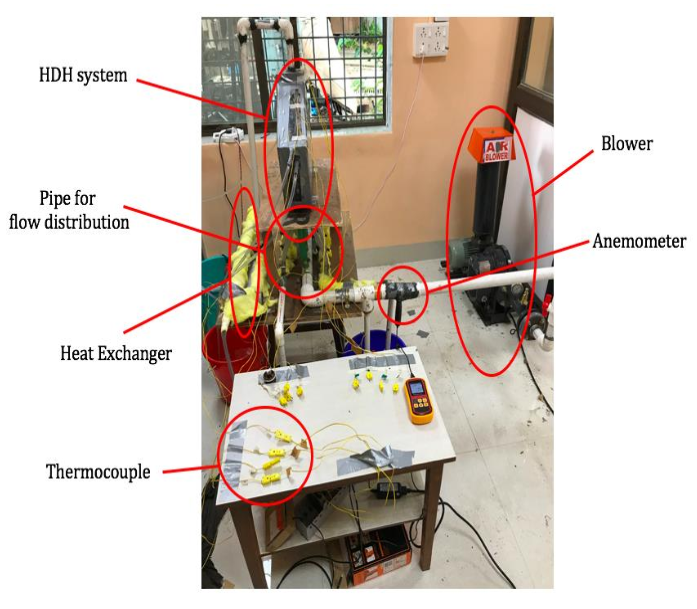This innovation pertains to a system and method for separating water from saline water using a humidification-dehumidification (HDH) process. The system comprises a humidifier, a dehumidifier, heat exchangers, and a unique heat transfer mechanism that enhances energy efficiency. The design is optimized for small-scale, decentralized applications, providing an economical and efficient solution for fresh water production. The technology addresses the limitations of current desalination methods by improving heat recovery and reducing energy consumption, making it suitable for remote and community-level water desalination.
The world is facing a critical shortage of fresh water due to increased contamination of freshwater sources and the rising global population. Although desalination of saline water offers a potential solution, the current methods, such as reverse osmosis and thermal desalination, have limitations, including high energy requirements and inefficiency in smaller-scale, decentralized applications.
- Higher Energy Efficiency: The innovation uniquely leverages a HDH desalination process optimized for energy efficiency, utilizing a novel heat transfer mechanism that reduces thermal resistance in the dehumidifier.
- Scalable, Decentralized Community-level Water Production: The design enables better heat recovery and lower energy requirements compared to conventional methods. This scalable technology overcomes the limitations of current desalination technologies for producing fresh water, making it economically viable for decentralized and community-level water production, particularly in remote and rural areas, thus addressing a critical global need for clean water access.
The prototype involves a system where saline water is introduced into a humidification chamber, where it contacts a carrier gas that absorbs moisture. The moist carrier gas is then heated and passed into a dehumidification chamber, where the moisture condenses and is collected as fresh water. The latent heat of condensation is transferred back to the humidification chamber to enhance energy efficiency.
We are not actively pursuing this technology as the other related patent is progressing.
3
Providing a scalable and energy-efficient desalination solution can significantly alleviate the fresh water shortage, particularly in remote and rural areas. This technology can improve access to clean water, enhance public health, and support sustainable agriculture and industry.
- Small-scale community water supply
- Remote and rural area water desalination
- Agricultural irrigation
- Industrial process water production
- Emergency and disaster relief water supply
Geography of IP
Type of IP
201821016006
475510


